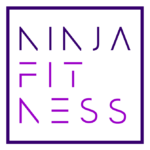Your cart is currently empty!

Overcoming Unique Fitness Challenges in the LGBTQ+ Community
In the quest for health and wellness, everyone faces challenges. However, there are unique fitness challenges in the LGBTQ+ community, these challenges often take on additional layers due to societal prejudices and lack of understanding. This blog post aims to shed light on the unique fitness challenges faced by the LGBTQ+ community and how we can work towards more inclusive fitness environments.
One of the most significant challenges faced by the LGBTQ+ community in fitness spaces is discrimination. Despite advancements in societal attitudes, discrimination remains a pervasive issue. Transgender individuals, in particular, face unique hurdles. For instance, transgender women are often unfairly scrutinized in women’s sports due to misconceptions about physical advantages1. Similarly, transgender men may struggle with acceptance in male-dominated sports2.
Body image issues also disproportionately affect the LGBTQ+ community. According to a study by the National Eating Disorders Association, gay men are 7 times more likely to report binging and 12 times more likely to report purging than their heterosexual counterparts3. This statistic underscores the immense pressure on LGBTQ+ individuals to conform to societal beauty standards, which can lead to unhealthy fitness practices.
The gym environment itself can be a significant barrier. Many LGBTQ+ individuals report feeling uncomfortable or unsafe in traditional gym settings due to fear of judgment or harassment4. This discomfort can discourage regular exercise, leading to potential health risks.
So, what can be done to address these fitness challenges in the LGBTQ+ community? The first step is education. By educating ourselves and others about the unique struggles faced by LGBTQ+ individuals in fitness, we can foster empathy and understanding5.

Next, we need to advocate for inclusive policies in fitness spaces. This could include implementing non-discriminatory policies, providing gender-neutral restrooms and locker rooms, and offering training for staff on LGBTQ+ issues6.
Fitness professionals can also play a crucial role in creating inclusive environments. By being aware of the specific needs and challenges of LGBTQ+ clients, fitness professionals can provide tailored support and guidance7.
Lastly, representation matters. Seeing LGBTQ+ individuals in fitness advertising, as personal trainers, or in leadership roles within fitness organizations can inspire others and create a sense of belonging8.
In conclusion, while the LGBTQ+ community faces unique fitness challenges, these are not insurmountable. Through education, advocacy, and inclusivity, we can create fitness environments where everyone feels safe, welcome, and empowered to achieve their health and wellness goals. Remember, fitness is not a one-size-fits-all journey, and everyone deserves the opportunity to thrive in their pursuit of physical health.
Let’s continue the conversation and work together to break down barriers in fitness for the LGBTQ+ community. Because fitness equality is not just about access to the gym; it’s about creating a world where everyone can pursue health and wellness without fear of discrimination or judgment.
Looking to be part of an online LGBTQ+ community? Let’s chat about your fitness plan! —Matt
Sources
- Transgender Women in Sports ↩
- Transgender Men in Sports ↩
- Eating Disorders in LGBTQ+ Populations ↩
- Creating Safe and Inclusive Gym Environments for LGBTQ+ Folks ↩
- LGBTQ Education and Advocacy ↩
- Inclusive Policies in Fitness Spaces ↩
- Fitness Professionals and LGBTQ Clients ↩
- LGBTQ Representation in Fitness ↩

Leave a Reply